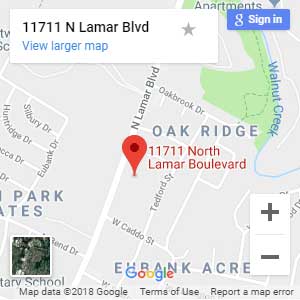In today’s society, we often look for easy, simple solutions to solve complex problems. Whether it’s drinking a weight-loss shake in hopes of shedding a few extra pounds or taking a pill to resolve uncomfortable feelings of anxiety, we often search for the easy way out because the alternative requires much more from us.
Similarly, wouldn’t it be nice if there was an easy way to treat alcohol addiction? One that required minimal effort from you and worked in a very short time? Sounds ideal, right? But what if this quick-fix solution came with a host of negative side effects and wasn’t guaranteed to work long-term? Would it still be worth it?
Table of contents
- How Does Alcoholism Work?
- What Is the Sinclair Method?
- How Often Do You Drink On the Sinclair Method?
- What Medication Does the Sinclair Method Use?
- Does the Sinclair Method Work to Treat Alcoholism?
- How Much Does the Sinclair Method Cost?
- Why Isn’t The Sinclair Method Used More Often?
- Will The Sinclair Method Work For Me?
- What Is The Best Alternative to The Sinclair Method?
- Get Sober With Safe and Effective Medical Detox for Alcohol Addiction
This miracle treatment we’re talking about is known as The Sinclair Method and it is often touted as a “cure” for alcohol use disorder. Although many people are trying this method in hopes of achieving a sober lifestyle, could one medication really hold all the answers? Here’s what you need to know before you commit to The Sinclair Method.
How Does Alcoholism Work?
Before you can fully understand the benefits and drawbacks of The Sinclair Method for alcoholism, it’s essential that you also understand how alcoholism works.
Alcoholism, referred to as alcohol use disorder (AUD), is problem drinking that becomes severe.1 It is not just a bad habit or an intense liking for alcohol. Alcohol use disorder is a chronic disease of the brain.2
Long-term, chronic abuse of alcohol alters levels of the neurotransmitters gamma-aminobutyric acid (GABA) and glutamate in the brain. Over time, these changes affect the way the brain functions and responds to alcohol.
As a result, people with alcohol use disorder cannot control their drinking habits due to significant changes in brain chemistry. They feel a compulsive need to drink to feel good and ultimately, to satiate the reward center in the brain. The physical reaction that occurs when an alcoholic has a drink makes it nearly impossible for them to resist the urge or craving to have another.
People with alcohol use disorder are also psychologically addicted to alcohol. As such, they obsess over when they will have their next drink, they are often preoccupied with thoughts about drinking, and they cannot stop even when they try with great determination. They prioritize drinking above all other things, including relationships and personal responsibilities at work, school, or home. They continue to drink despite the physical, emotional, and relational harm it causes.
In addition, without alcohol, an alcoholic often becomes very restless and irritable. All of these qualities make it very difficult for someone with alcohol use disorder to quit cold turkey without medical detox, professional addiction treatment, and behavioral therapy.
What Is the Sinclair Method?
The Sinclair Method (or TSM) is a treatment method for alcoholism that is aimed at reducing problem drinking without requiring full abstinence. Here’s how it works: a person who is addicted to alcohol takes an opiate blocker medication called naltrexone one hour before their first drink of the day for the rest of their life (as long as they continue drinking alcohol). The medication disrupts their body’s reward cycle while drinking, essentially reteaching the brain to not associate alcohol with pleasure anymore. As a result, the person will want to drink less instead of more.
Over time, the Sinclair Method hopefully reduces or eliminates a person’s cravings for alcohol by getting rid of the pleasurable effects they experience while drinking. Ideally, the person would eventually just stop drinking.
Conversely, abstinence-based alcoholism programs like Alcoholics Anonymous (AA) and many addiction treatment centers require that a person stops drinking completely as soon as they start the program.
How Often Do You Drink On the Sinclair Method?
Naturally, many people find this alcoholism treatment method to be an attractive option because it does not require full abstinence. Technically, you can drink as often as you want with the Sinclair Method, but as the naltrexone does its work, you probably won’t want to drink as often as you used to. Ultimately, that’s the goal.
What Medication Does the Sinclair Method Use?

The Sinclair Method uses the FDA-approved medication naltrexone to help alcoholics overcome their problematic drinking habits. Naltrexone is also used to treat opioid addiction and may be administered in two different forms: ReVia and Vivitrol.
- ReVia is a pill that can be self-administered at home daily. To treat alcoholism, doctors typically prescribe a dose of 50 mg once daily.
- Vivitrol is an extended-release injection that must be administered by a licensed medical provider. One Vivitrol shot lasts about four weeks.
Although ReVia and Vivitrol are two different medications, they both contain the key ingredient naltrexone, which blocks the brain’s pleasure center from experiencing feelings of euphoria while drinking or using opioids.
For those considering The Sinclair Method, it’s important to know that Naltrexone does have some negative side effects. Anyone who uses the medication while they have opiates in their system will experience precipitated withdrawal, or immediate opioid withdrawal symptoms, which can include:3
- Agitation
- Anxiety
- Muscle aches
- Increased tearing
- Insomnia
- Runny nose
- Sweating
- Yawning
- Cramping
- Diarrhea
- Dilated pupils
- Goosebumps
- Nausea
- Vomiting
Common side effects of ReVia also include:4
- Weakness
- Tiredness
- Insomnia
- Anxiety
- Increased thirst
- Nervousness
- Restlessness
- Irritability
- Lightheadnessess
- Fainting
- Muscle or joint aches
- Decreased sex drive
- Impotence
Does the Sinclair Method Work to Treat Alcoholism?
According to one study from the C Foundation, The Sinclair Method has a 78% long-term success rate.5 According to research, it is generally agreed upon that using naltrexone to treat alcoholism greatly reduces heavy drinking, cravings, and instances of relapse, but The Sinclair Method may not be the best solution for all problem drinkers.6,7
Someone who is severely addicted to alcohol may not be able to stop drinking even with The Sinclair Method due to other issues that cannot be solved with medication alone. For example, counseling and behavioral therapy are often required to help people resolve issues like:
- Managing triggers
- Treating the underlying causes of addiction
- Identifying healthy coping strategies
- Navigating relationships in a newly sober lifestyle
In conclusion, physical sobriety is just one aspect of recovery. To fully overcome an alcohol use disorder, a person must also address other personal issues like the ones listed above. Ultimately, if someone is severely addicted to alcohol, he or she may also simply forego taking the naltrexone to drink. In some instances, medication like naltrexone can help, but lasting change and sobriety will require a healthy recovery program and professional treatment.
How Much Does the Sinclair Method Cost?
Licensing and regulations vary by state, so the cost of The Sinclair Method may vary significantly depending on where you receive treatment. However, patients can expect to spend several hundred dollars to cover the initial appointment and follow-ups.
Generic naltrexone is a relatively inexpensive drug that is covered by most Medicare and health insurance plans.8 Regardless, you will want to check with your insurance provider to verify these details if you choose to pursue The Sinclair Method for treatment.
Why Isn’t The Sinclair Method Used More Often?
There are several reasons why The Sinclair Method is not used more often among clinical providers. One 2015 study surveyed 117 clinical counselors to determine the following common objections to using naltrexone to treat alcohol use disorder.9
- The Sinclair Method does not address the underlying causes of the addiction.
Many of the counselors surveyed in the study expressed concern because they believe The Sinclair Method does not address the root causes of addiction. If someone is still suffering emotionally, he or she is more likely to stop taking naltrexone and revert to drinking to cope with emotional problems, mental health disorders, and life’s challenges.
- People may not take the naltrexone as prescribed.
If someone wants to keep drinking and experience the pleasurable effects it provides, he or she may simply stop taking naltrexone and proceed with their normal drinking habits.
- Naltrexone can cause unpleasant side effects, including liver damage.
A small percentage of naltrexone users may experience unpleasant side effects and some may also experience more severe ones, such as liver damage or an allergic reaction. Also, the Sinclair Method may not be an option for heavy drinkers who are already suffering from cirrhosis or other health problems that may be exacerbated by taking the medication.
- People taking naltrexone cannot use opioids, even for medical purposes. If a patient is taking naltrexone, he or she cannot use prescription opioids for medical purposes (such as recovery from surgery) without first abstaining from taking the naltrexone. This could cause issues, especially if the prescription opioids are necessary and there are no effective alternatives.
- People taking naltrexone may lose motivation to attend counseling or support groups, as well as reduce their willpower to stop drinking.
Some patients may become unmotivated to continue taking naltrexone or lose faith in their ability to stop drinking. It may also interfere with a patient’s impulse control and resolve to get sober.
Will The Sinclair Method Work For Me?
It is impossible to say whether The Sinclair Method will work for you or not, as your success in sobriety is largely based on your ability to stick with a treatment regimen and fully commit to making life changes. However, The Sinclair Method may NOT be a good fit for you if:
- You want to quit drinking cold turkey.
- You are only interested in abstinence-based approaches to AUD treatment.
- You are currently taking a prescription opioid medication that would interact poorly with naltrexone.
- You are not motivated to take the medication.
- The side effects of naltrexone are too severe for you.
In short, The Sinclair Method is a relatively new method of treatment for alcoholism and we need more research and data to positively confirm the extent of its effectiveness. However, some people may find that it’s an effective approach to AUD treatment.
What Is The Best Alternative to The Sinclair Method?

The Sinclair Method is one option for recovery but it’s not the only one. Alcohol use disorder is much more than the physical act of drinking. Instead, it is a disease of the body, mind, and spirit. As such, a practical and effective approach to treating alcoholism is with a holistic, evidence-based rehab program.
Comprehensive and personalized addiction treatment often begins with medical detox. During detox, medical and clinical professionals help patients break their physical dependence on alcohol with medication-assisted treatment. This helps reduce the severity and duration of alcohol withdrawal symptoms so they can start functioning without the drug.
Once the patient has reached a stable and sober state, he or she can begin working through the various psychological side effects of alcohol withdrawal, which often include anxiety, depression, and sleep problems. A clinical counselor can help clients wade through these issues and mentally prepare for ongoing treatment in rehab.
After detox, a holistic residential or outpatient rehab program will provide clients with the tools, life skills, and support they need to make behavioral and lifestyle changes to sustain long-lasting sobriety. Instead of merely taking a medication to prevent cravings, clients can unpack the deep-seated issues that contributed to their addiction and work to rebuild a healthier life for themselves as they maintain their sobriety in a safe and supportive environment.
Residential rehab and intensive outpatient programs also often include family therapy, which is another essential component to lasting recovery. Alcoholism affects the entire family unit, so naturally, loved ones play an important role in the recovery process. Often, spouses, parents, or close loved ones attend family therapy sessions to learn how to work together with the individual in recovery and rebuild a relationship that is free from enabling behaviors, codependency, and other harmful behaviors and mindsets that contributed to the addiction. This process encourages cohesive healing and a supportive, healthy home environment for people in recovery.
Fully engaging in a recovery program and aftercare services like sober living provides robust support, accountability, and resources that greatly contribute to a person’s ability to create and sustain a fulfilling sober life for themselves. Although naltrexone may play a part in this process, it likely won’t be the only factor that contributes to long-lasting sobriety.
Get Sober With Safe and Effective Medical Detox for Alcohol Addiction
If you or a loved one is searching for solutions to alcohol addiction, the caring professionals at Briarwood Detox Center can help. We offer safe and effective medically-assisted detox in Austin and Houston. Please call (888) 857-0557 to learn more about our alcohol detox program or to verify your insurance coverage with us today.
References:
- https://www.niaaa.nih.gov/alcohol-health/overview-alcohol-consumption/alcohol-use-disorders
- https://www.asam.org/resources/definition-of-addiction
- https://medlineplus.gov/ency/article/000949.htm
- https://www.rxlist.com/revia-side-effects-drug-center.htm
- https://cthreefoundation.org/the-sinclair-method
- https://academic.oup.com/alcalc/article/36/6/544/132461
- https://pubmed.ncbi.nlm.nih.gov/23075288/
- https://www.goodrx.com/naltrexone/medicare-coverage
- https://substanceabusepolicy.biomedcentral.com/articles/10.1186/s13011-015-0004-7


